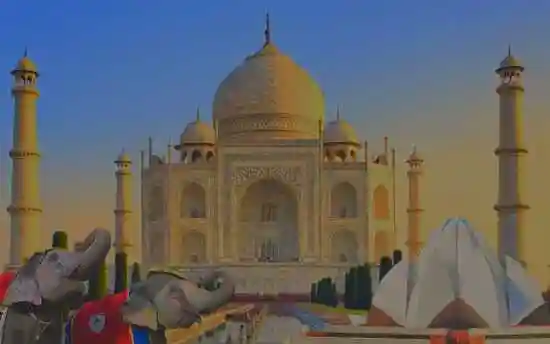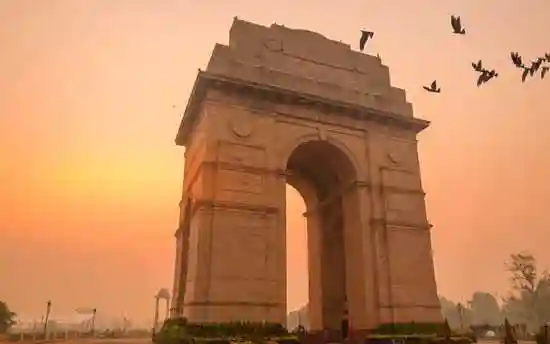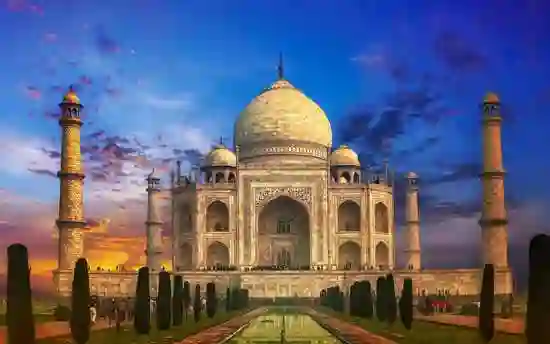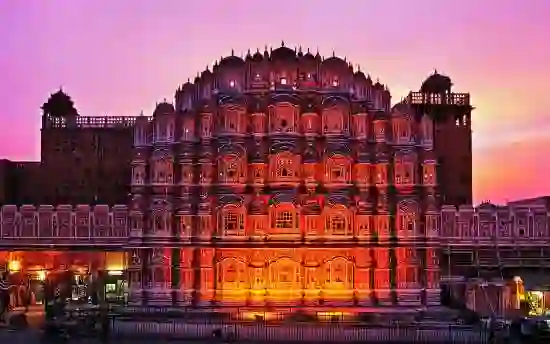- Home
-
Golden Triangle Tour
The Golden Triangle of north India is one of the most popular and well-received tourist circuits of the country. The tour basically covers three of the most vibrant, beautiful amazing cities of India.
About Golden Triangle Tour
Reflecting the many colors and flavors of India’s eclectic composition, contemporary Delhi is one where you will be inspired, amazed, fascinated and impressed at every corner.
Tourist Information about Delhi
The city of Agra is said to have been founded by Raja Badal Singh in 1475. The Hindu epic 'Mahabharat' makes a reference to the 'Agraban' that supposedly made up part of Brij Bhumi.
Tourist Information about Agra
Situated against the backdrop of the rugged Aravalli hills of Rajasthan, the city of Jaipur is one of the most popular tourist attractions in the country. Jaipur, literally means ‘The City of Victory’.
Tourist Information about Jaipur
-
Tour Packages
SAME DAY TRIP TO AGRA
GOLDEN TRIANGLE TOUR EXTENSIONS
- Golden Triangle Tour Extensions
- With Varanasi
- With Puskkar & Udaipur
- With Orchha & Khajuraho
- With Bharatpur & Sariska
- With Haridwar & Rishikesh
- With Golden Temple Amritsar
- With Mata Vaishnodevi
- With Kashmir
- With Shimla Manali
- With Ranthambhore Taj and Tiger Tour
- with Kerla-the Gods Own Country
- With Goa & Mumbai
- With Bangalore, Mysore & Ooty
- With Tirupati & Puttaparthy
RAJASTHAN HOLIDAYS
- Rajasthan Holidays
- Grand Rajasthan Tour
- The Desert Magic Tour
- Colourful Rajasthan Tour
- Magnificent Rajasthan Tour
- Rajasthan Fort & Palaces Tour
- Fascinating Rajasthan Tour
- Rajasthan Cultural Tour
- Rajasthan Village Tour
- Golden Triangle Tour with Taj Group of Hotels
- Golden Triangle Tour with The Oberoi Group of Hotels
- Golden Triangle Tour with Ranthambore & Udaipur with The Oberoi Group of Hotels
-
Offers & Info
OFFERS ON CAR COACH RENTAL
THE TAJ MAHAL INFORMATION
FAIR & FESTIVALS IN RAJASTHAN
CONTACT & PAYMENT INFO
TOS & PRIVACY POLICY
- About Us
- Contact Us
- Enquiry
Company Information
Golden Triangle Tour
- Golden Triangle Tour
- Golden Triangle Tour Plus
- Rajasthan Holidays
- Rajasthan Train Tours
- The Taj Mahal
- Fair & Festivals in Rajasthan
- What People Say
Tourist Information
- About Delhi
- Tourist Attraction in Delhi
- About Agra
- Tourist Attraction in Agra
- About Jaipur
- Tourist Attraction in Jaipur
SAME DAY TRIP TO AGRA
GOLDEN TRIANGLE TOUR EXTENSIONS
- By Car - US$ 105 Per Person
- By Train - US$ 100 Per Person
- Golden Triangle Tour Extensions
- With Varanasi
- With Puskkar & Udaipur
- With Orchha & Khajuraho
- With Bharatpur & Sariska
- With Haridwar & Rishikesh
- With Golden Temple Amritsar
- With Mata Vaishnodevi
- With Kashmir
- With Shimla Manali
- With Ranthambhore Taj and Tiger Tour
- with Kerla-the Gods Own Country
- With Goa & Mumbai
- With Bangalore, Mysore & Ooty
- With Tirupati & Puttaparthy
RAJASTHAN HOLIDAYS
- Rajasthan Holidays
- Grand Rajasthan Tour
- The Desert Magic Tour
- Colourful Rajasthan Tour
- Magnificent Rajasthan Tour
- Rajasthan Fort & Palaces Tour
- Fascinating Rajasthan Tour
- Rajasthan Cultural Tour
- Rajasthan Village Tour
- Golden Triangle Tour with Taj Group of Hotels
- Golden Triangle Tour with The Oberoi Group of Hotels
- Golden Triangle Tour with Ranthambore & Udaipur with The Oberoi Group of Hotels
RAJASTHAN TRAIN TOURS
- Rajasthan Train Tours
- Palace on wheels Tour
- The Maharajas Express Train Tour
- Golden Triangle Tour by Train





